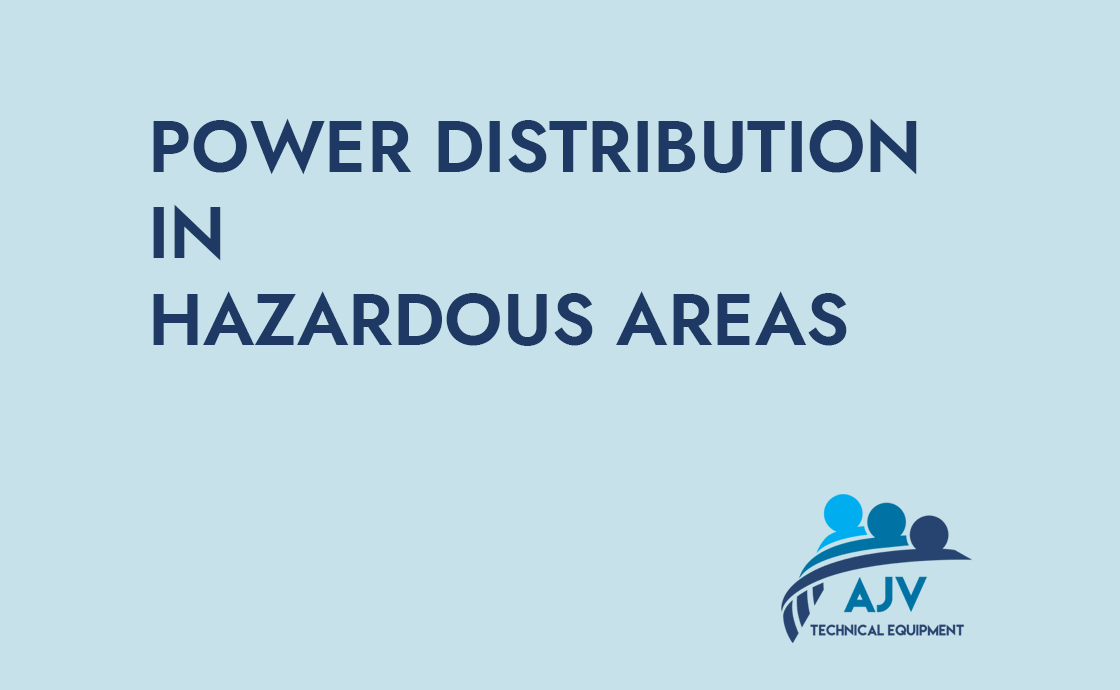The term ‘hazardous area’ makes us more aware of what is being said, isn’t it? And rightly so, because every aspect of a hazardous area requires extreme attention.
One of the most important aspects which require extreme planning is the power distribution system. Why? Because the power distribution system itself poses the hazard of potential fire and explosion. It is an integral part of a hazardous environment, yet, it adds to the risk factor of the area.
In this article, we will take a look at the various components of a power distribution system in a hazardous area.
Explosion proof equipment
Since a hazardous area inherently carries the threat of ignition and explosion, all electrical equipment used there needs to be explosion proof. Explosion proof lights are specially manufactured for usage in hazardous areas. They are designed to contain any ignition within the lighting structure itself, thus reducing the risk of fire and explosion.
The power distribution system of a hazardous area
The power distribution system of a hazardous area consists of the following components:
1. Explosion-proof transformer
Transformers are the mother of the power distribution system. This is where the power enters the area and hence has to be essentially explosion proof in nature. Ideally, in such transformers, both the primary and secondary winding conductors need to be loosely brought out and terminated at terminals or directly connected to the explosion proof terminal outside the enclosure.
Usually, they are vertically lifted structures with a capacity of resistance to overload. They are fire-proof, low noise and require low maintenance. They also have integrated low voltage and high voltage winding which increases their mechanical strength. These transformers are also designed to be resistant to short circuits.
They usually support mains supply voltage of 110V and 230V and support two or four socket configurations. The sockets have to be ex socket types. Some transformers also have a socket configuration that supports linking transformers which allows usage of several transformer units for large low-voltage lighting setups. Usually, ex transformers are designed for easy stacking and storage.
Different hazardous environments may have different kinds of power distribution needs. Hence, a very useful variant of an explosion proof transformer available in the market is a portable explosion proof transformer. These act like mini transformers, providing power supply to any area which might need it. The entire assembly is usually mounted on a heavy-duty cart made of non-sparking aluminium. The cart is fitted with wheels for easy transportability.
2. Splitter boxes
Also known as junction boxes, splitter boxes are an integral part of a circuit protection system for an area requiring circuit integrity. These are boxes or cabinets which house the component parts of the entire electrical system such as switches, sockets, knobs, plugs, controls and others. They make hazardous area lighting implementation flexible by extending any central power source. They can also be used to power ancillary equipment.
Ex splitter boxes are commonly used in tanks and vessels, oil rigs and refineries, chemical plants and hazardous confined places. While they are used extensively in hazardous areas, they are an integral component of the emergency lighting system as well. Explosion proof junction boxes are tailor-made to meet the main requirements of power distribution, monitoring and other functions inside the hazardous area.
A significant aspect of explosion proof splitter boxes is that the same splitter box can be used to control independent light chains. They facilitate power transmission to multiple and opposite directions, thus enabling lighting in a larger area quickly, easily and with minimal cables. This not only reduces the costs of installation but also minimizes the hassle and cost of maintenance.
Ex proof splitter boxes are available for low voltage power of 24V and 42V and high voltage power of 110V and 230V. Usually they are available in two or four socket configurations. The sockets are ex proof as well. The input cables are usually customized as per order, while the default size is generally 10-metres. These kinds of splitter boxes can be easily stored or transported.
3. ATEX Cables
All cables used for the purpose of power distribution in a hazardous environment have to be explosion proof. The cables should have a gas/vapour-tight continuous corrugated metallic sheath with an overall jacket of suitable polymeric material. They also have to be compliant to the ATEX directives or equivalent.
Usually, cables in a hazardous environment are manufactured using flame-retardant materials and have a resistant outer jacket, similar to the one used for a rubber hose cable.
4. ATEX Lights
Like all the other components, ideally, all lights used in a hazardous environment should be explosion proof in nature. However, sometimes people opt for intrinsically safe lighting as well. Different areas of a hazardous facility may have different lighting requirements. Hence, a range of customized lighting options is available to cater to each kind of need.
Broadly speaking, explosion proof lighting (ex lighting) can be of two types:
1. Temporary ex lighting, such as LED blast light, germicidal light, UVA inspection light, tank sets, link-up tank sets, tank set with inspection lights, tank and confined space inspection set, portable floodlight, hornet, rechargeable battery-powered LED light and others.
2. Fixed ex lighting which includes mid-power bays, high-power bays, general bay lights, bulkheads, floodlights, linear lights, etc.
5. Plugs and sockets
Another integral aspect of a power distribution system is plugs and sockets. Needless to say, even plugs and sockets have to be explosion proof to be used safely in these kinds of work environments. They should have a robust design and be chemical resistant.
Most explosion proof plugs and sockets are designed for hot swapping of apparatus without shutting down circuits or disconnecting terminals. They are usually available in polyamide, stainless steel and nickel-plated brass materials. Additionally they are easy to assemble and require less maintenance.
6. Safety switches and isolators
Another integral component of a power distribution system, safety switches and isolators have to be reliable to isolate the power supply on electrical installations should such needs arise. Such scenarios may arise during an emergency or simply during routine maintenance and repair work.
The choice of safety switches is important since they are connected to power circuit breakers. Hence, opting for ones which are compatible with the kind of power circuit breakers used in the power distribution system is essential.
The power distribution system of a hazardous area has to be planned keeping a number of aspects in mind. Opting for components with a high longevity and low maintenance can bring down capital expenditure as well as operational expenditure to a great extent.

